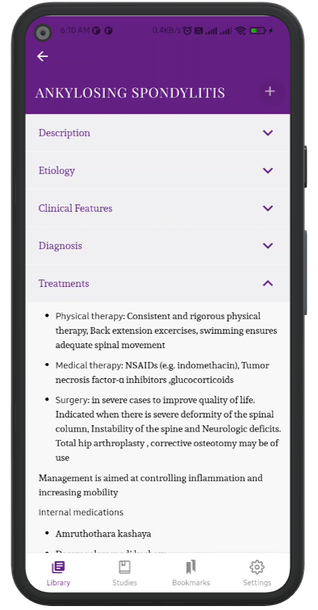ATAXIA
Description
- The word ataxia is derived from the greek word “a taxis” meaning without order. Persons with ataxia have problems with coordination of movements because parts of the nervous system that controls coordination, equilibrium and balance are affected
The three broad categories of ataxia are
- Cerebellar ataxia due to disorder of the cerebellum and its connections
- Sensory ataxia due to disorders of proprioception
- Vestibular ataxia due to peripheral vestibular disorders
Types
- Pure cerebellar ataxia is usually not associated with vertigo, which is characteristic of vestibular disease. Significant worsening in the dark is a notable feature of sensory ataxia.
- s/s vary depending on the type of Ataxia. Poor coordination , difficulty with fine motor tasks, such as eating, writing or buttoning a shirt , change in speech , unsteady walk and a tendency to stumble , abnormal eye movements, difficulty swallowing are seen
Inherited ataxias
- Hereditary disorders account for all cases of ataxia in children and one third of cases in adults. They can be classified on their mode of inheritance into Autosomal Dominant, Autosomal recessive, X linked Recessive and Mitochondrial disorders
Autosomal dominat
Spinocerebellar ataxias (SCA) 1-38
- In this heterogeneous group of inherited ataxias, cerebellar dysfunction is associated with disorders of cerebral cortex, brainstem , basal ganglia, spinal cord, peripheral nerves, occulomotor nerves and retina in various combinations
Dendato-Pallido-Rubro-Luysian atrophy(DRPLA)
- It is characterized by Ataxia, choreoathetosis, dystonia, seizures, myoclonus and dementia
Episodic ataxias 1-7
Leukodystrophies
Autosomal recessive
Friedreich’s Ataxia (FA)
- Most common form of all hereditary ataxias, onset is in adolescence
- Characterized by neurological dysfunction , Cardiomyopathy, Diabetes mellitus, Kyphoscoliosis and optic atrophy
- Neurological signs include limb and gait ataxia, nystagmus, absence of deep tendon reflexes, extensor plantar responses
Ataxia Telengectasia (AT)
- Onset in the first decade
- c/f mimic those of FA
- Associated with progressive oculo cutaneous telengiectatic leions
Cockayne syndrome
Wilson’s disease
Refsum disease
X linked
- 1.Fragile X syndrome
- 2.X linked sideroblastic anaemia with ataxia
Mitochondrial
- 1.Kearn sayres syndrome (KSS)
- 2.Myoclonic epilepsy with red ragged fibres
Signs due to involvement of mid line cerebellar structures
Gait ataxia
- Difficulty in standing with feet together, both with the eyes open and closes
- Walking with a wide base, with difficulty in turning
- Impaired tandem walking
Truncal ataxia
- Inability to sit unsupported
Titubation
Dysmetria of lower limbs (impaired heel shin test)
Hypotonia
Occular signs
- Saccadic intrusions, horizontal gaze evoked nystagmus, upbeat and pendular nystagmus and down beat nystagmus
Signs due to involvement of Lateral cerebellar hemispheres
- Dysdiadochokinesis – Inability to perform rapid alternating movements of the limbs
- Dysmetria of upper limbs: inability to judge distance when reaching out for objects ( finger nose and past pointing tests)
- Intention tremor: Large amplitude tremor of upper limbs which worsens while approaching a target
- Cerebellar speech: scanning, slurred, staccato
Investigation
General screening tests
- CBC
- ESR, CRP
- Peripheral blood smear
- Serum electrolytes
- Serum B12
MRI
- To detect posterior fossa lesions such as tumours, strokes, abscess, demyelinating diseases or brain stem encephalitis
CT
- To detect conditions such as cerebellar haemorrhage, hydrocephalus, mass lesions
Treatments
- Treating the underlying cause resolves the ataxia, such as stopping medications that cause it
- Adaptive devices
- Hiking sticks or walkers for walking
- Modified utensils for eating
- Communication aids for speaking
- Physical therapy to improve coordination and enhance mobility
- Occupational therapy
- Speech therapy to improve speech and aid swallowing
Internal Medicines
- Badradarvadi kashaya
- Danadanayanadi kashaya
- Maha rasnadi kashaya
- Kapikachu choorna
- Asvagandha choorna
- Rasna dashamoola taila – samana matra
- Masha taila
- Mahakalyanaka ghrita –samana matra
- Vatagajankusha rasa
- Brihat vata Chintamani rasa
Procedures
- Udvartana – Kolakulathadi / Triphala choorna
- Dhanyamla dhara
- Abhyanga – Mahamashataila/ bala asvagandha taila
- Virechana - Sukumara Eranda
- Anuvasana vasti – Sahacharadi vasti paka
- Mustadi rajayapana vasti
- Nasya – ksheerabala
- Shirovasti - Dhanwantara taila / Ksheeabala taila
- Talam - Kachooradi + ksheerabala / Rasnadi choorna+Nimbamrit eranda
Department
Kayachikitsa

